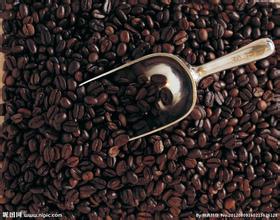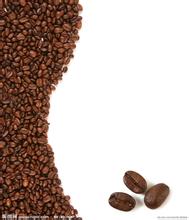Introduction to the quality of Peruvian Coffee Bean roasting, Flavor and Taste of Manor
Introduction to the planting environment of coffee beans in Peru
Peruvian coffee is grown in a planned way, which has greatly increased coffee production. Its rich acidity and mellow smoothness are its most prominent features. Peruvian coffee has a soft sour taste, medium texture, good taste and aroma, and is an indispensable ingredient in the production of comprehensive coffee. High-quality Peruvian coffee, with strong aroma, smooth, layered, rich sweet, elegant and mild sour taste, will quietly awaken your taste buds.
Compared with high-quality organic Peruvian coffee, the difference between ordinary organic Peruvian coffee and high-quality organic Peruvian coffee is huge: relatively cheap beans are not only poor in quality, but often have obvious defects in the cup. Especially the grass flavor, overfermented flavor. It takes a lot of work to find good Peruvian coffee beans among a lot of middlemen or other people who can buy them. However, it also takes a lot of hard work to pick sample beans. However, that is much better than working hard in piles of documents. Peruvian coffee is grown in a planned way, which has greatly increased coffee production. Its rich acidity and mellow smoothness are its most prominent features. Peruvian coffee has a soft sour taste, medium texture, good taste and aroma, and is an indispensable ingredient in the production of comprehensive coffee. High-quality Peruvian coffee, with strong aroma, smooth, layered, rich sweet, elegant and mild sour taste, will quietly awaken your taste buds.
Compared with high-quality organic Peruvian coffee, the difference between ordinary organic Peruvian coffee and high-quality organic Peruvian coffee is huge: relatively cheap beans are not only poor in quality, but often have obvious defects in the cup. Especially the grass flavor, overfermented flavor. It takes a lot of work to find good Peruvian coffee beans among a lot of middlemen or other people who can buy them. However, it also takes a lot of hard work to pick sample beans. But that's better than working hard in piles of papers.
A series of chemical changes occur in the process of baking. After about 5-25 minutes of baking (depending on the temperature selected), the green coffee beans lose some humidity and turn yellow. In this process, the coffee beans will swell, changing from a strong, high-density raw bean to a low-density fluffy state. After this process, the coffee beans will about double in size and begin to show a light brown after stir-frying. After this stage is completed (after about 8 minutes of baking), the calories will be reduced. The color of the coffee soon changed to dark. When the preset baking depth is reached, cold air can be used to cool the coffee beans in order to stop the baking process.
Baking is roughly divided into shallow baking (Light), medium baking (Medium), urban baking (City) and deep baking (Deep). Light roasted coffee beans: will have a strong smell, very crisp, high acidity is the main flavor and slightly mellow. Medium-roasted coffee beans: have a strong mellow, but also retain a certain degree of acidity. City-baked coffee beans: the surface is dark brown, the acidity is replaced by slight bitterness, and most of the flavor has been destroyed. Deep-roasted coffee beans: dark brown in color and oily on the surface. For most coffee beans, the alcohol content increases significantly and the acidity decreases. In fact, roasting coffee is a way of processing food. The roasting of professional coffee is the personal expression of the roaster. The biggest problem when you first come into contact with professional coffee beans with different roasting degrees (SPCIAITYCOFFEE) is the name of the roasting degree. For example, CITY, FUIICITY, FRENCH, ESPRESSO, etc., all produce different baking colors because of the different baking machines and producing areas. In addition, some roasting levels are named after mixed coffee: for example, ESPRESSO is a coffee with a specific roasting degree for making ESPRESSO, and even if the color looks the same, it may have a completely different flavor. Therefore, the selection of the type of beans, baking temperature and baking method, and the length of baking time are the main factors that determine the final flavor.

Important Notice :
前街咖啡 FrontStreet Coffee has moved to new addredd:
FrontStreet Coffee Address: 315,Donghua East Road,GuangZhou
Tel:020 38364473
- Prev

Introduction to the quality characteristics of Ethiopian Coffee Origin Flavor description of acidity and bitterness
Ethiopia Coffee Flavor description method to understand certain coffee terms can not only let you accurately express your understanding of coffee, but also make your customers or friends feel that you are quite expert in coffee and are a coffee glutton. Flavor [flavor] is the overall impression of aroma, acidity, bitterness, sweetness and mellowness, which can be used to describe the overall feeling of contrast coffee.
- Next

Introduction to the quality characteristics of the method of describing the Flavor of Ethiopian Yega Xuefei washed G1 Coffee
Ethiopian coffee washing technology Yejaschefine itself is a small town with a population of about 20,000. Because the taste of coffee produced by Wenago, Kochere and Gelena Abaya is similar to that of Yejasuffe, it is similarly classified into the regional category of Yejasuffe. Yejasuffe is similar to Sidamo in both cultural and geographical environment.
Related
- Detailed explanation of Jadeite planting Land in Panamanian Jadeite Manor introduction to the grading system of Jadeite competitive bidding, Red bid, Green bid and Rose Summer
- Story of Coffee planting in Brenka region of Costa Rica Stonehenge Manor anaerobic heavy honey treatment of flavor mouth
- What's on the barrel of Blue Mountain Coffee beans?
- Can American coffee also pull flowers? How to use hot American style to pull out a good-looking pattern?
- Can you make a cold extract with coffee beans? What is the right proportion for cold-extracted coffee formula?
- Indonesian PWN Gold Mandrine Coffee Origin Features Flavor How to Chong? Mandolin coffee is American.
- A brief introduction to the flavor characteristics of Brazilian yellow bourbon coffee beans
- What is the effect of different water quality on the flavor of cold-extracted coffee? What kind of water is best for brewing coffee?
- Why do you think of Rose Summer whenever you mention Panamanian coffee?
- Introduction to the characteristics of authentic blue mountain coffee bean producing areas? What is the CIB Coffee Authority in Jamaica?

